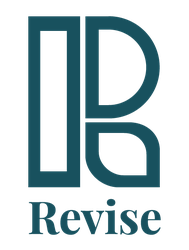Optimize your cash flow – 12 weeks’ rolling forecast
In order to succeed, a company must have adequate cash reserve to manage the solvency, i.e. liquidity of the company. When the company is successful, there may be ample cash reserves that require investment planning, but nevertheless situations where cash reserves are not adequate may occasionally rise. These situations include at least periods of strong growth; the cash reserves of even a very profitable company may be strained, when the company is moving upward fast. In the case of stagnating business, if the change is not prepared for, the result may be a severe liquidity crisis. In these circumstances, a week-level cash flow forecast helps to foresee events, but only if it is comprehensive enough.
Week level forecasts increase effectiveness
The cash flow forecast must be helpful in managing cash reserves, whether large or small. According to my experience, a 12 weeks’ rolling cash flow forecast gives adequate basis for this.
Typically, a cash flow forecast is based either on the data available in financial systems, or on the monthly cash flow statement form, calculated using profit and balance forecasts. Of these, the first method provides reliable information for approximately two weeks into the future, after which the financial systems usually do not provide information on future invoices and other transactions. The monthly cash flow statement is, on the other hand, mainly intended for interpretation of historical data, and it is not necessarily suitable for forecasting the amount of cash balance. Additionally, the payment terms of companies are usually less than a month, and therefore a monthly forecast is not useful for managing liquidity.
It is easy to see some good reasons for using a week-level forecast. Let’s consider a project-based business, where the advance payments invoiced to customer have been planned so that they cover the expenses of the project for its whole duration. What happens if a payment is delayed from its due date at the beginning of a month to the end of a month? The cash deficit caused by the delay will not be even visible in a month-level forecast. If, on the other hand, there would be a need to pay invoices from suppliers earlier, how could longer payment schedules be made when the financial system provides accurate information for only the following two weeks’ financial situation? Few suppliers agree on month-level payment schedules, most instead require weekly settlements. More information on tools for solving a severe cash balance situation can be found here.
Basic data for 12 weeks’ cash flow forecast
The 12 weeks’ rolling cash flow forecast is started by using the data for first two weeks available in the financial systems. The information, for example in sales and purchases ledgers and bank account, must be up to date to make them a reliable basis for forecast. (Up-to-date information is required with other stages as well.) For weeks 3 to 12, the required forecasts are calculated from profit and balance forecasts, using several parameters that depend on the principle of operation of the company.
One significant exception to this exists, which is if the company is using factoring. In that case, payments to the cash balance have to be forecasted based on the profit forecast starting from the first week.
It is preferable to make project-specific cash flow forecasts in the case of larger projects. The instalments to be invoiced are usually advance-oriented, and the payment terms for the projects’ instalments can vary considerably, so an unambiguous calculation for forecasting these is not always available. If all projects of the business have similar terms, these can be modelled.
Parameters to assist forecasting
Most parameters needed for compiling a cash flow forecast can be calculated using the profit and balance forecasts. Payments to the cash balance for the coming weeks can be estimated based on sales receivables turnover. In the case of project instalments and factoring payment terms, this is not applicable. Instead, information on these is received from project-specific cash flow forecasts and by using parameters to model factoring terms. In payments from cash balance, accounts payable turnover can be used if accounts payable have usually been paid in time. If there have already been delays in payments in the business, average payment terms are a good way to estimate the sum of payments due in the future.
The values of the parameters shall be analyzed by examining realized cash flow. The payment behavior of clients affects future expectations, and can have great significance for example in the case of projects. If the project size is extremely significant in relation to the turnover of the company, late payments of the client can have a negative impact on the overall cash flow of the company, and this must be reflected on the cash flow forecast.
Cash flow forecast as a provider of response time
Everyone wants to avoid negative surprises. A week-level cash flow forecast provides companies with time to respond, so that changes which used to be regarded as negative surprises perhaps no longer come as surprises. It is for example possible to initiate negotiations on loan instalments with financiers, or negotiations on payment terms with suppliers, in advance.
Everyone also seeks to optimize their operations. In the case of cash flow, the proceeds available from cash balance or the amount of interest due to late payment should be optimized; the goal is to increase proceeds or decrease expenses.
Summary
A 12 weeks’ rolling cash flow forecast provides companies with better control of cash flow. The forecast aids in providing guidelines for future business, and time to conduct various operations. We shall publish a SaaS-based software tool for implementing 12 weeks’ cash flow forecast. If you want to know more or you require help for cash flow planning, contact us.
